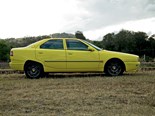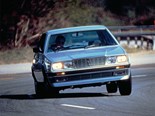1995 Maserati Quattroporte IV - Our Shed





































|

|

|

|

|

|

|

|

|

|

|

|

|

|

|

|

|

|
Giallo Sprint Maserati: Finally, sprint!
I am often asked what brand of car it is. Perhaps it’s the almost luminous solid Giallo Sprint paintwork that first draws curious eyes, but the word Maserati appears nowhere on the Quattroporte IV’s exterior. That’s appropriate on what is surely one of the most interesting yet overlooked luxury sports sedans of the 1990s (I have a Maserati-published history of the Quattroporte that dismisses the Q IV in a few sentences, as it were an embarrassing aberration).
Inside, you find ‘Maserati’ on the beige face of the trademark ovoid clock and the logo on the left-hand-side of the steering wheel.
| Our shed: 1995 Maserati Quattroporte
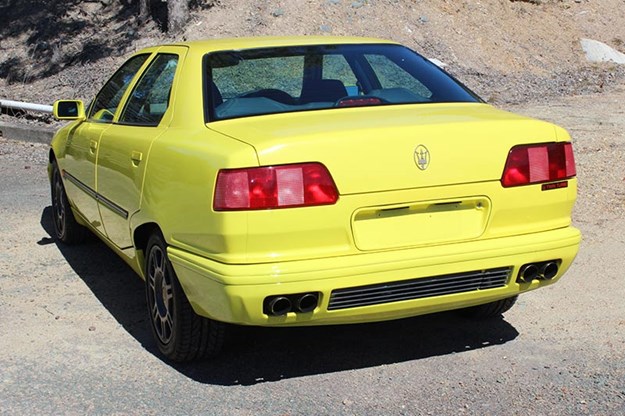
As for ‘Quattroporte’, this is surely one of the silliest automotive names in history and self-explanatory when you give it a nanosecond’s thought. My own eyes were first drawn to this car at the Australian International Motor Show at Darling Harbour in 1996. My friend, House of Maserati proprietor and Maserati importer Tony Graziano, was putting a brave face on it. He described the vibrant yellow show car with its contrasting blue interior as beautiful. Only after buying it as a somewhat rundown cheap used car 18 years later did I learn that he had requested a blue car with beige leather but got this one instead, the only yellow Quattroporte IV sold in Australia and for all I know the world.
I had owned it for some 16 months when the car developed its first significant problem. The speedometer wasn’t working when I took delivery and other minor glitches needed sorting but this was a problem of a different order. Imagine owning a Maserati that won’t take throttle! It could be driven gently with minimal throttle openings but that was all.
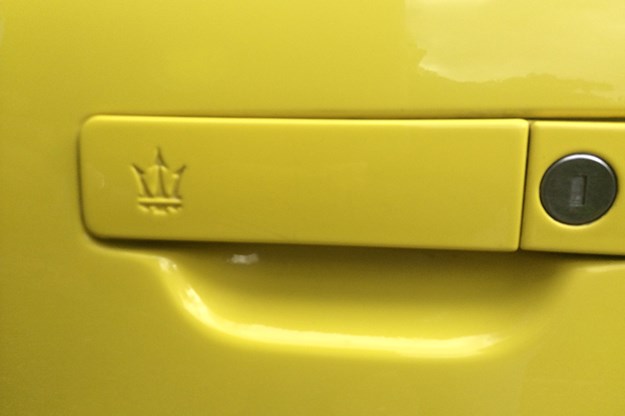 The identity clues are there if you look carefully
The identity clues are there if you look carefully
So I decided to ambush my old mate Andrea Vitale. I first met Andrea when I inadvisedly bought a Biturbo 425i in 1995. He was the chief mechanic at the House of Maserati: I got to know him well! Now he’s the boss at Ferrari-Maserati specialist Andrea Motori in downtown Artarmon. Downtown from Sydney, maybe, but a good 1200km south for me. And yet, despite the ultra-gentle throttle applications, this was about the most enjoyable interstate drive I have ever done. This car is alive all around you, utterly responsive, the twin-turbo 2.8-litre V6 grumbling away and the richness of the briar wood, leather and alcantara – virtually all surfaces inside the cabin are trimmed in one of these materials – cabin never palling; by contrast, I think the 425i’s was overdone.

Andrea replaced the throttle switch and the car was fixed in two minutes. But having driven all that way, I decided to leave it with him. There was some fettling to be done.
When I bought the yellow Maserati at a bargain basement price, I was under few illusions. I was just thrilled to own the very car I had so admired all those years ago; the custard yellow HSV GTS-R on a nearby stand looked merely garish by contrast.
It drove well but not the way you’d expect of such a powerful machine. Before the throttle switch issue I had recorded zero to 100km/h in nine seconds and 80-120 (second gear) in six. The performance was seamless although nowhere near what it should be, but beggars can rarely be choosers.
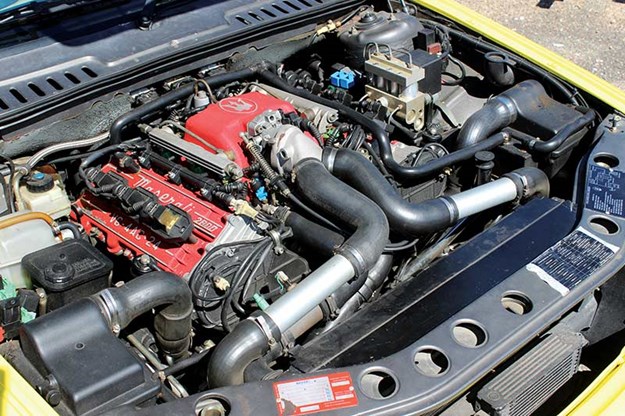 The twin-turbo V6 proudly displays the true identity
The twin-turbo V6 proudly displays the true identity
In Artarmon, I asked Andrea if he could give it a comprehensive tune and fix a few niggling issues like a faulty bonnet latch and I can no longer remember what else.
There can be few better examples of belt and braces than the Maserati’s camshaft timing system: it is by belt AND chain. The bad news is that to change the chain, you must first remove the engine. Andrea said he could not tune the engine because both the chain and the belt had to be replaced. Anxious to keep the cost down, Andrea suggested I leave the car with him so that he could work on it in the (very rare) quieter times in the workshop. I agreed.
 It cost a bomb to sort out the woes, but it’s now a gem
It cost a bomb to sort out the woes, but it’s now a gem
With the engine out, he also found that the turbochargers needed to be rebuilt. The exhaust system was ruined, too, thanks in large part to the first owner’s – he was an opal miner – fast trips between Sydney and Lightning Ridge. My old mate Lambros Kouriefs of Hitech Mufflers in Darlinghurst fashioned a brilliant new system in stainless steel and it sounds superb. Only problem was, the oxygen sensors recognised a non-standard system and the check engine light remained on. This was also rectified.
Finally back in Queensland, the car then developed a new issue. It refused to run on six cylinders. So it travelled by truck to Sterling Auto Electrics. I have known proprietor Roger Willis ever since my Armstrong Siddeley (‘Baby’) Sapphire 236 failed to proceed one day in Brisbane. This, however, was not the ideal time to send a car to him because he was in the midst of shifting premises.
 Clearly blue trim was the new black in Bologna that day
Clearly blue trim was the new black in Bologna that day
Roger isolated the problem as a faulty ignition module. These are effectively unobtainable. Maserati no longer supplies them. Ultimately, with Christmas imminent, he tracked one down in Lithuania (!). The part eventually arrived but was delivered to the old address. Months elapsed before it belatedly arrived at Unit 17/129 Robinson Road East (no less!), Geebung.
Good news, bad news: the Maserati sang on all six but the Check Engine light glowed balefully. Maserati in Brisbane could not help (but gave Roger a bill anyway, which he generously did not pass on to me). He was worried that if the car was driven any distance there could be a significant problem. This time, I had the answer – Andrea. So I rang him. ‘Just get the car back and drive it, John. Drive it 1000 kilometres and then report back to me. No way you will hurt the engine’.
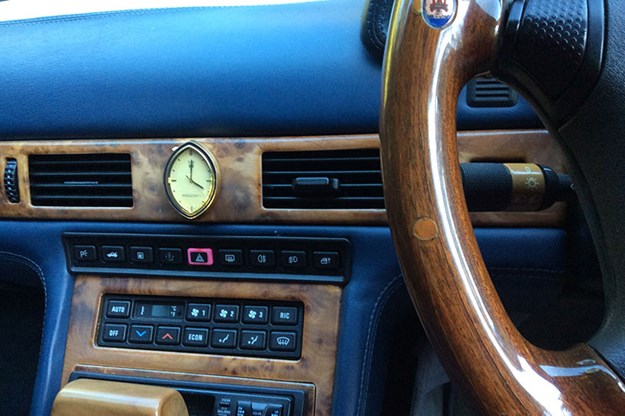
So I collected it and posted the first 150km just driving home. The car was performing like I had never known it to, instantly responsive to the throttle. And the light was not shining! I stopped for lunch after about 60km. Starting it up again, the car began to kangaroo and the Check Engine light came on. Essentially, I refused to believe this and talked sternly to the car like Basil Fawlty does to his red Morris 1100 (but without the stick!). After about 30 seconds, things came good, although the light stayed on.
The next day was similar but the problem was I had Jennie beside me. ‘Should the car be doing that?’ she asked as we kangaroo-ed our way down a quiet street. This was after a restart following a 30-minute interval, just like the previous day. Same issue, same outcome. It then drove perfectly the 60km home although the light stared at me. If I ducked my head below the upper part of the steering wheel’s rim the warning light was perfectly positioned – out of sight! Incidentally, it shares two things with a contemporaneous Ford Falcon: an adjustable steering wheel that’s always too low and the Aussie BTR four-speed automatic transmission.
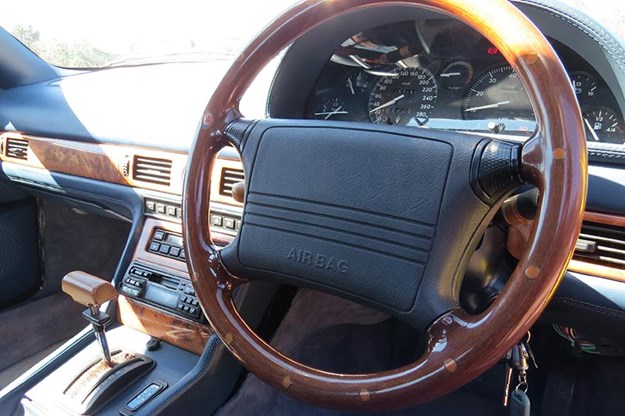
Over succeeding days as I tickled the distance up past 500km, a most curious thing happened, actually two curious things. First, the kangaroo-ing for 30 seconds vanished. Second, a couple of days later, the Check Engine light no longer lit up when it shouldn’t, i.e. a minute or so after it went out on start-up.
It still comes on occasionally, about once in every 15 start-ups. But if I pull over and re-start the engine, it disappears. In short: no problem.
Andrea was immensely generous with his bill and Roger, too, charged me modestly for the many hours he spent puzzling over electrical issues that Maserati itself could not help with. But I never thought I could enjoy any car this much. It now sprints to 100 in 7.1 seconds and does the 80-120 split in 4.3. My darling wife Jennie turned out to be right. "Perhaps it just needed you to drive it."
Classic Australian Family Car Value Guide home page
Muscle Car Value Guide home page
Japanese Classic Car Value Guide home page
Unique Cars magazine Value Guides
Sell your car for free right here
Get your monthly fix of news, reviews and stories on the greatest cars and minds in the automotive world.
Subscribe

.jpg)











